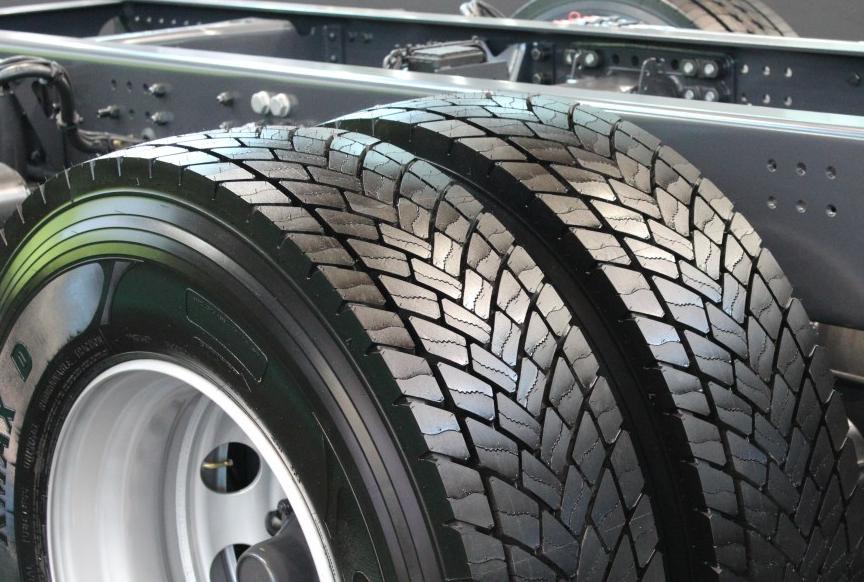Will European truck tyre market shares follow the UK experience?

15 years after our first market share survey of its kind, and almost 10 years after we identified that “the UK truck tyre market is a five-horse race”, this month we’ve taken another look at the figures and spoken to sources close to the leading players in order to provide an up-to-date snapshot of what is going on in the UK truck tyre replacement market (see pages 14 to 31 of the September magazine).
We have to begin with the caveats that large proportions of the market are made up of imported tyres and that the ‘official’ data only reflects the sales of manufacturers producing tyres in Europe. In addition, not all details are declared in any case. Therefore, it is impossible to get all of the facts relating to sales. However, beginning with what we do know, and then cross-referencing that with a number of sources close to the market, gives us the opportunity to build up a picture that reflects the lion’s share of the market.
What we found is that there is a consensus on two points. Firstly, while our 2009 found that the market was something of a two-horse race between Michelin and Bridgestone, post-financial crisis market shifts resulted in a five-horse race. And those changes have stuck. And secondly, despite all the upheaval that has taken place in the nearly-a-decade since, Hankook remains the market leader as far as new truck tyre sales in the UK are concerned.
Hankook truck tyre sales are said to account for around a fifth of the total replacement market. Indeed, some sources put that figure as high as 21 per cent as of summer 2023.
Second-placed Bridgestone remain strong in the market, having proved to be a robust business partner during the pandemic and therefore having retained significant proportions of fleet business despite the turmoil.
Goodyear, which has previously held the top-spot for new tyre replacement sales, is still known to be providing a lot of cost-per-kilometre (CPK) fleet business. However, some sources suggested this manufacturer’s retail volumes are low, describing them as below Michelin levels in that respect.
Continental, which have previously occupied shares of around 17 per cent, now occupies around 15 per cent, with some sources saying the figure should be even lower, down to 12 per cent.
UK truck tyre market share then and now
Arguably Prometeon, the former Pirelli industrial and commercial tyre business, has the most to be happy about. While not the biggest of the big names, the consensus is Prometeon’s market share lies in the 8 to 10 per cent range. Not only is that a decent share in and of itself, but it also represents a significant degree of improvement during the last decade.
All of that is set against an overall UK truck tyre market that is reportedly down 14 per cent year-to-July 2023. That might sound bad, and certainly isn’t good, but it is significantly better than the average for Europe which is down 21 per cent during the same period.
The wide range of variation between commercial vehicle sub-segments (long haul versus on/off road, for example) should also be considered. For example, while all the leading players occupy market shares between 15 and 20 per cent overall, the respective sub-segment shares that make up the total figure range from 5 per cent to 25 per cent. A similar degree of variation is true across the different European markets too. Reasons for such wide variation include the maturity of each market, as well as the brand’s position in relation to distribution equity, manufacturing base, CPK contract activity and sales workforce.
For those reasons, the overall European picture is a little different to what we see in the UK. Tyres & Accessories understands that, on average, Michelin remains the truck tyre market leader across the whole of Europe, but that lead is reportedly under challenge in most major markets. Bridgestone is said to be number two in Europe – followed by Goodyear, Hankook, Continental and Prometeon.
The problem for the historic premium players is that – while still leading – they appear to be losing market share as they focus their growth and resources on non-tyre commercial vehicle-related business. And that has led some market observers to suggest that the big three will continue the market share decline witnessed over the last decade. Indeed, when you compare the European picture with what we have seen in the UK, could the European three-horse race end up becoming something like the five-horse event we have over here?
This article is an example of the editorial comment that introduces every edition of Tyres & Accessories magazine. Not a subscriber? No problem, click here to become one.





Comments